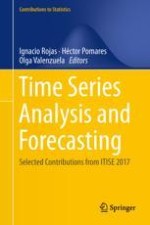This book presents selected peer-reviewed contributions from the International Work-Conference on Time Series, ITISE 2017, held in Granada, Spain, September 18-20, 2017. It discusses topics in time series analysis and forecasting, including advanced mathematical methodology, computational intelligence methods for time series, dimensionality reduction and similarity measures, econometric models, energy time series forecasting, forecasting in real problems, online learning in time series as well as high-dimensional and complex/big data time series.
The series of ITISE conferences provides a forum for scientists, engineers, educators and students to discuss the latest ideas and implementations in the foundations, theory, models and applications in the field of time series analysis and forecasting. It focuses on interdisciplinary and multidisciplinary research encompassing computer science, mathematics, statistics and econometrics.
